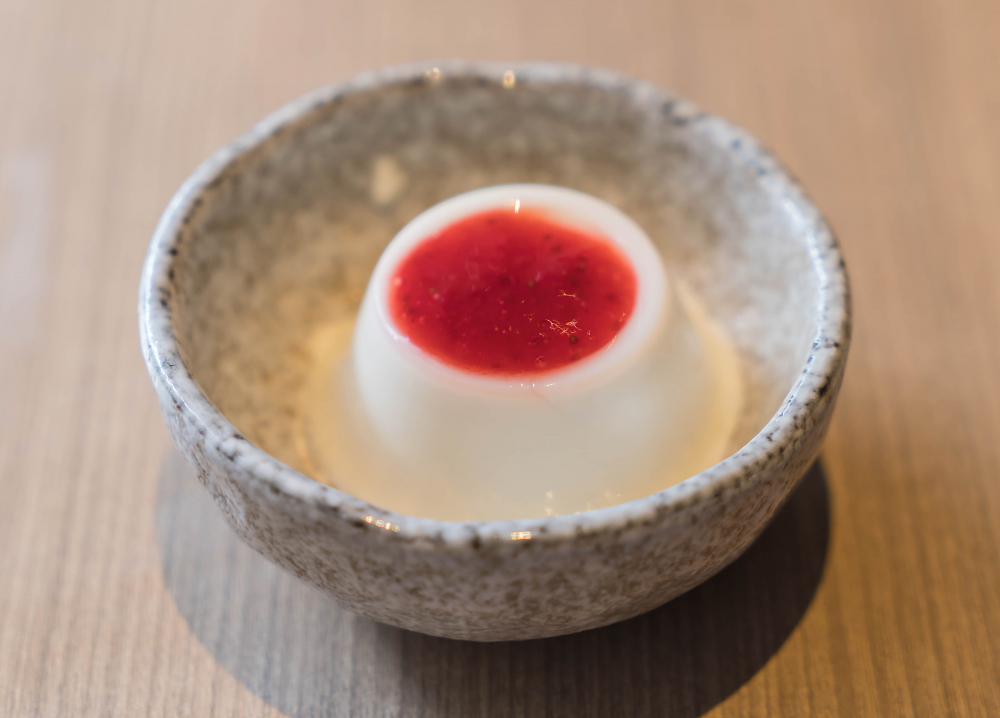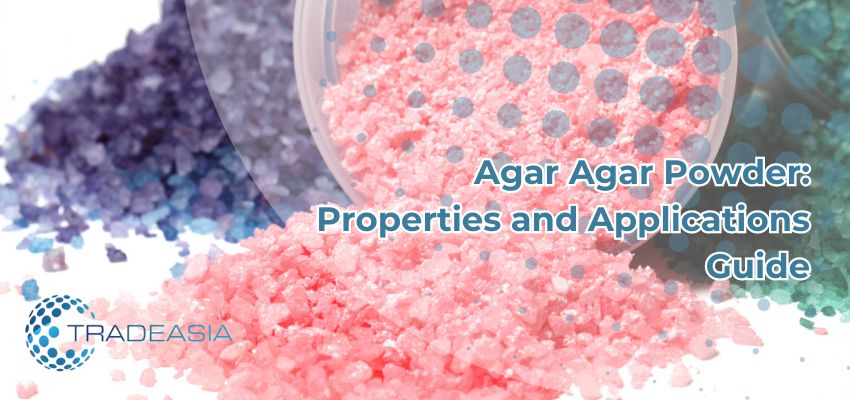Basically, we often use “agar,” otherwise we call it “agar-agar,” as a common gelling substance in Asian cuisine. This white or yellowish-white odorless and tasteless gelatinous substance is best to prepare in a little bit of pot-roast stew. Agar is an elementary and extensible product used for manufacturing of sparkling textures. Its extractive base is the red seaweeds. It can be extruded like sheet-metal through a variety of formats, including powders, flakes, and sheets.
If agar is widely used in industry for multiple and consumer applications then it is worth to investigate the mitigation factors. Its unique composition includes gelatin, cellulose, starch, certain complexes to form solid and viscous solutions and other physicochemical properties. This blog will thus elaborate on all of these aspects of agar: its chemical structure, its properties, and the vast number of different types of industries and consumer products that use it.
What is Agar Powder Used For
Agar is broadly applied in industrial and consumers products, for example, it can be in food processing to help the agitation, solidifying, gelling, and stabilizing of foods. Additionally, its use in the research industries as a microbial nutrition and as a stabilizer in cosmetics has been recorded.
Chemical Structure
Agar is an heterogeneous polysaccharide based on galactose that is extracted from red algae. Its primary structural features are a low concentration of sulfate esters and repeating units of 3-6 anhydro-L-galactose, with minimal variations. It is composed of agarose and agaropectin with the composition is 70% agarose and 30% agaropectin for normal agar.
Agarose is known as the main gel-forming agent in agar and the gels are brittle, hard, and thermally reversible. Besides, agaropectin is an agar component that is branching and it is not a gel-forming agent. The amount of 3,6-anhydrogalactose rings affects gel strength; the more 3,6-anhydrogalactose rings, the stronger the gel is.
Properties of Agar Powder
1. Solubility
Even though agar-agar is insoluble in cold water, it swells significantly and may absorb up to 20 times its own weight in water. In boiling water, it dissolves easily and at concentrations as low as 0.50%, it forms a solid gel. At temperatures between 95oC and 100oC, powdered dry agar-agar dissolves in water and other solvents.
2. Gelling and Stability
The key characteristic of agar-agar is its capacity to generate reversible gels by simply chilling heated aqueous solutions. Agar is employed in a wide range of real-world uses, including industrial uses, microbiology, biochemistry, and molecular biology. It is also frequently used as a food additive. Among other hydrocolloids, agar-agar excels in terms of gelling power. Very diluted solutions with a fraction of 0.5% to 1.0%, agar-agar can be used to create agar-agar gels. Furthermore, they clearly illustrate the fascinating phenomena of hysteresis (the temperature difference between melting and gelling temperatures) and syneresis (the spontaneous extrusion of water through the gel’s surface).
Temperatures far lower than the gel melting point cause gelling to develop. Once cooled to between 32 and 45 degrees Celsius, a 1.5% agar-agar solution creates a gel that doesn’t melt below 85 degrees Celsius. Agar-agar’s unique hysteresis interval has numerous applications in the food industry.
Because of its gelling and stabilizing properties, agar is widely used in a variety of food processes. It dissolves in hot water and forms a gel upon cooling (between 32°C and 43°C). The gel can withstand temperatures as high as 85°C. Agar-agar solutions can be weakened by prolonged exposure to high temperatures, which will reduce the gel strength once the temperature drops and the gel forms. A falling pH accelerates the effect. As a result, high temperatures should be avoided when handling agar-agar solutions.
3. Other properties
Since potassium or calcium salt is not needed for agar gels to gel, it has no flavor or odor, in contrast to other polysaccharide gels. This characteristic makes it possible to include agar into a variety of products.
Applications of Agar Powder
1. Food Industry

Food industry is one of agar powder’s main applications which acts as a thickener, stabilizer, gelling agent, and texture agent. With its neutral flavor, agar may be used in a wide range of savory and sweet dishes. It can be used in soups as a thickening agent, fruit preserves, ice cream, sorbets, and other sweets, and a clarifying agent in brewing.
Also, it can be utilized in bakery products, water gels, dairy products, canned meat and fish products, sauces, pie fillings, icings, meringue, and beverages as a stabilizer and gelling agent because of its high melting point of agar gels. In the confectionery industry, agar has long been used as a gelling ingredient for jelly sweets and aerated goods like toffees, nougat, and marshmallows. In addition, agar acts as a texture improver in the various dairy products, which are yogurt, cheese, and cream cheese.
Agar is also used in the beverage sector to prepare juices and wines by acting as a flocculating and clarifying agent. The high melting point of the agar gel makes products more stable in hot countries, an advantage over gelling agents such as gelatin and it has similar properties with gelatin. So, it can be used as a replacement for vegetarian gelatin.
2. Cosmetic Industry
In the cosmetics industry, with its ability to contribute no oil to the product—a crucial quality for creating skin care products—agar-agar’s suspensive, emulsifying, stabilizing, and gelling properties make it one of the most widely utilized ingredients. It is also non-irritating and non-toxic, which is crucial for those with sensitive skin.
3. Research Industry
Molds and/or bacteria are unable to contaminate agar when it is dry. However, agar gels and solutions are rich environments for microorganisms to grow. Thus, in the research industry, agar is frequently used as a growth medium for growing bacteria and fungi, along with additional nutrients. It is also employed in plant cell culture as a gelling agent.
Conclusion
Agar is a kind of versatile ingredient that is extensively used in food processes, microbiology and biotechnology, and the cosmetics industry. It is because of its characteristics, such as gelling properties, stability, and its capacity to combine with certain chemicals to create complexes, among other physicochemical properties. Besides, it has no flavor or odor, in contrast to other polysaccharide gels. This characteristic makes it possible to include agar into a variety of products.

